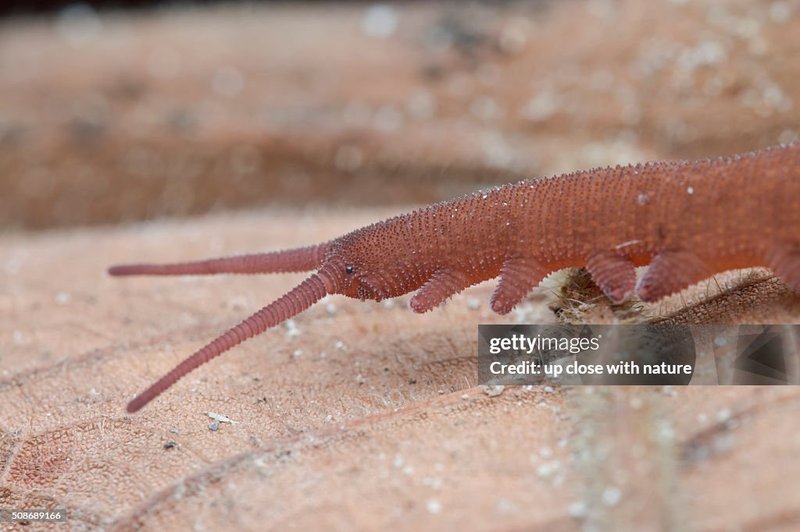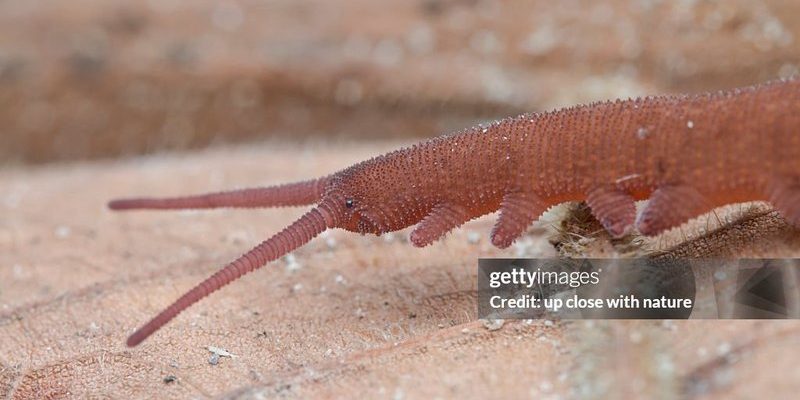
Let’s dive into the world of velvet worms and explore how they survive in various environments. Think of them like tiny, squishy superheroes, equipped with skills that help them navigate through different climates. So, grab your favorite drink, and let’s chat about the resilience of these peculiar critters!
What Are Velvet Worms?
Velvet worms, or onychophorans, are fascinating little animals that might look like a cross between an earthworm and a caterpillar. They have soft, velvety bodies and can range in color from brown to vibrant blue. These guys are typically found in humid environments, like rainforests, where they thrive in the leaf litter and under decaying wood.
One of their coolest features is their lobopodia—those soft, stubby legs they use to creep around. Unlike insects, velvet worms have a unique way of hunting: they shoot a sticky slime at their prey, which can be anything from insects to small worms. This method is not just creative; it’s highly effective!
You might be wondering how such delicate-looking creatures survive. While they’re known for their preference for moisture, it raises an interesting question: what happens when their environment dries up?
Where Do Velvet Worms Prefer to Live?
Primarily, velvet worms enjoy damp habitats. Rainforests, for instance, provide the perfect climate for them. They love high humidity levels and moist soil, allowing them to keep their skin from drying out. These creatures are often found hiding in dark, cool places, where they can avoid the sun and stay hydrated.
In the grand scheme of things, their natural habitats are crucial for their survival. The moisture keeps their skin moist, which is essential because they breathe through their skin. Just imagine trying to take a breath while running a marathon in a desert—sounds tough, right?
However, not all velvet worms live in the same conditions. Some species have adapted to different climates, which means they can tolerate a bit more dryness than others. But the question remains—can they thrive in arid or dry regions?
Can Velvet Worms Survive in Dry Climates?
Surviving in dry climates isn’t easy for velvet worms. Their soft bodies and reliance on moisture make them vulnerable when the humidity drops. In essence, they’re like fish out of water when faced with arid environments. But here’s the thing: while they might not thrive in dry conditions, they do possess survival strategies.
In some cases, velvet worms can enter a state of dormancy, similar to hibernation. This adaptation allows them to slow down their metabolism and conserve moisture. When the conditions become more favorable—like after a rain—these little guys can wake up and continue living their normal lives. It’s like hitting the pause button on a game until things get better!
Nevertheless, their ability to survive in dry climates largely depends on the specific species and their unique adaptations. Some are more tolerant than others, making it difficult to provide a blanket answer.
How Do Velvet Worms Adapt to Their Environment?
Adaptation is key for any species, and velvet worms are no exception. Here are some ways they manage to survive in less-than-ideal conditions:
- Dormancy: As mentioned, some velvet worms can go dormant during dry spells. This adaptation helps them conserve moisture.
- Moisture Seeking: Velvet worms often come out during the night or rainy periods to minimize their exposure to dry air.
- Habitat Selection: They tend to find microhabitats with higher humidity, like under stones or inside decaying logs, even in predominantly dry environments.
By seeking out these moist pockets, they can stay hydrated and avoid the risks of drying out. It’s a clever strategy that reflects the resilience of these creatures.
The Importance of Humidity for Velvet Worms
Humidity plays a crucial role in the life of velvet worms. As they breathe through their skin, maintaining moisture is vital for their respiratory process. Without enough humidity, they can become desiccated, which can be fatal.
Imagine trying to run a race in a sauna—difficult, right? Velvet worms face a similar challenge when their environment is too dry. They need a balance, and without it, their health can decline rapidly.
This reliance on humidity also influences their behavior. Velvet worms might curl up or retreat to cool, humid spots when conditions become unfavorable. Observing them in action can provide insight into just how essential moisture is for their wellbeing.
What Happens When Velvet Worms Encounter Drought?
During drought conditions, velvet worms face serious challenges. As mentioned earlier, their survival hinges on their ability to adapt. In prolonged dry spells, hormonal changes can trigger dormancy, allowing them to withstand the harsh environment temporarily.
However, if the drought persists, it can be harder for them to survive. They may struggle to find food or suitable habitats, leading to population declines in certain areas. Imagine trying to find a refreshing drink when the local water supply runs dry—it’s not easy!
In many ways, these periods of drought can act like a natural selection process. Velvet worms better adapted to drier conditions may thrive, while others that can’t cope may not survive. This can lead to a change in local populations over time.
To sum it up, velvet worms are incredible little creatures with some fascinating adaptations, but they’re not built for dry climates. While they can endure short periods of aridity through dormancy and clever habitat selection, they thrive in moist environments where conditions are just right.
So, the next time you think about velvet worms, remember their unique beauty and resilience. Whether they’re in a tropical rainforest or battling the heat of a dry spell, these soft-bodied critters have a way of making life work, even when the odds seem stacked against them. Just like us, they have their own struggles and triumphs in this big, wild world!

